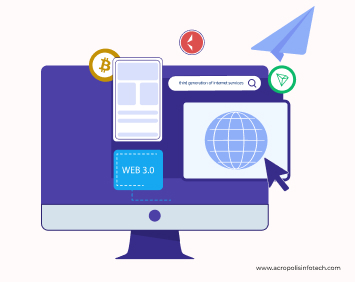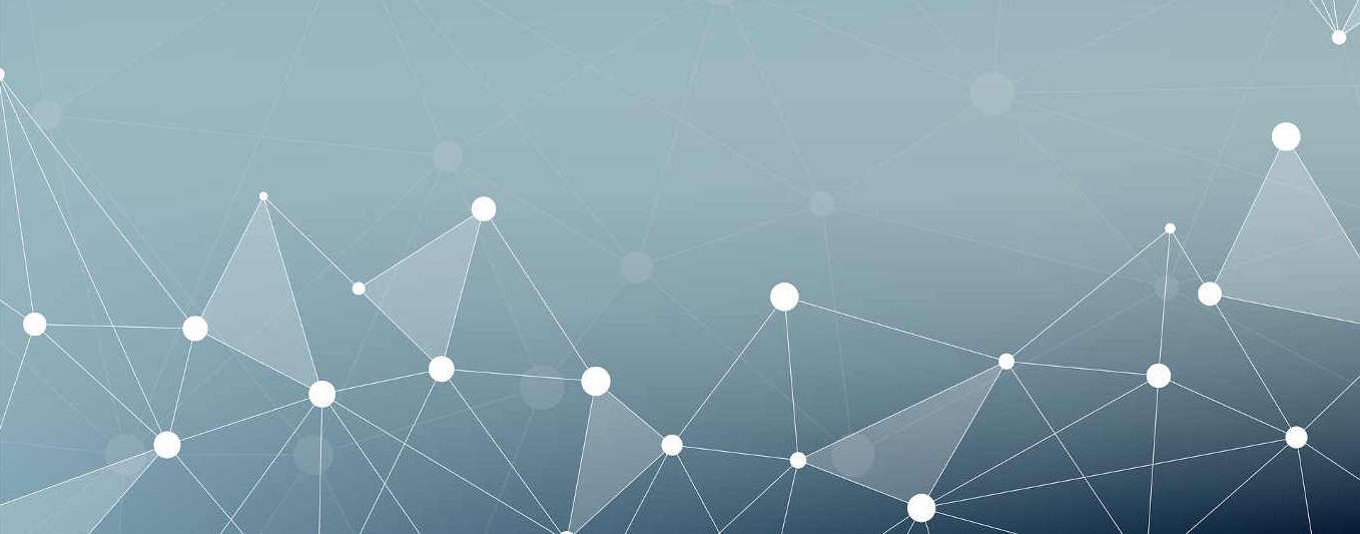Envision another kind of web that precisely deciphers what you input, however really comprehends all that you convey, regardless of whether through text, voice, or different media, one where all content you consume is more custom fitted to you than any other time in recent memory. We are at the tipping point of another stage in the web’s development. A few early trailblazers call it Web 3.0.
Seemingly, there are a couple of beginning phase Web 3.0 applications that as of now exist today, yet until the new web turns out to be completely implanted in the web framework, their actual potential can’t be noticed.
Yet, what precisely is Web 3.0, what will it resemble and how might it completely change us?
What Is Web 3.0?
Web 3.0 is the forthcoming third era of the web where sites and applications will want to deal with data in a shrewd human-like manner through innovations like AI (ML), Big Data, decentralized record innovation (DLT), and so on Web 3.0 was initially called the Semantic Web by World Wide Web creator Tim Berners-Lee and was pointed toward being a more independent, smart, and open web.
The Web 3.0 definition can be extended as follows: Information will be interconnected in a decentralized way, which would be an immense jump forward to our present age of (Web 2.0), where information is generally put away in concentrated storehouses.

Besides, clients and machines will want to associate with information. Yet, for this to occur, programs need to comprehend data both reasonably and relevantly. Considering this, the two foundations of Web 3.0 are semantic web and man-made reasoning (AI).
Web 3.0, Cryptocurrency and Blockchain
As Web 3.0 organizations will work through decentralized conventions – the establishing squares of blockchain and cryptographic money innovation – we can hope to see a solid union and advantageous connection between these three advances and different fields. They will be interoperable, consistently coordinated, robotized through shrewd agreements, and used to drive anything from miniature exchanges in Africa, oversight safe P2P information document stockpiling and imparting to applications like Filecoin, to changing each organization lead and work their business. The current slew of DeFi conventions is only a glimpse of something larger.
Web 3.0 Technologies
There are a couple of subtleties that we want to remember while investigating Web 3.0 tech. As a matter of first importance, the idea isn’t new. Jeffrey Zeldman, one of the early engineers of Web 1.0 and 2.0 applications, had composed a blog entry putting his help behind Web 3.0 back in 2006. Yet, talks around this point had started as soon as 2001.
Development of the Web 3.0 Technologies
Web 3.0 will be conceived out of a characteristic development of more established age web apparatuses joined with state-of-the-art advancements like AI and blockchain, also the interconnection among clients and expanding web use. Evidently, Internet 3.0 is a move up to its forerunners: web 1.0 and 2.0.
Web 1.0 (till 2005)
Web 1.0, likewise called the Static Web, was the first and most dependable web during the 1990s notwithstanding just contribution admittance to restricted data with almost no client connection. Once upon a time, making client pages or in any event, remarking on articles wasn’t a thing.
Web 1.0 didn’t have calculations to filter web pages, which made it incredibly difficult for clients to track down significant data. It resembled a one-way roadway with a restricted pathway where content creation was finished by a limited handful and data came generally from registries.
Web 2.0 (2005-present)
What innovation helps multiple Billion individuals for 80% of their waking hours every day?
Web 2.0, begat as such by O’Reilly and others somewhere in the range of 1999 and 2004, moved the world on from static work area website pages intended for data utilization and served from costly servers to intelligent encounters and client created content that brought us Uber, Airbnb, Facebook, and Instagram.
The ascent of Web 2.0 was generally determined by three center layers of advancement: versatile, social, and cloud.
This made ready for both informal communities and client-created content creation to thrive since information can now be conveyed and divided among different stages and applications.
The arrangement of instruments in this web period was spearheaded by various web pioneers like the previously mentioned Jeffrey Zeldman.
Web 3.0 (on the way)
While the Web 2.0 wave is as yet proving to be fruitful, we are likewise seeing the main shoots of development rise out of the following enormous change in outlook in web applications, intelligently entitled Web 3.0. As difficult to accept as it could appear, Web 3.0 (initially begat the Semantic Web by Tim Berners-Lee, the Web’s unique innovator), is a considerably more key disturbance, one that in time will leave everything up until recently in its shade. It is a jump forward to open, trustless, and permissionless organizations.
- Open‘ in that they are worked from open-source programming worked by an open and available local area of designers and executed in full perspective on the world.
- Trustless‘ in that the actual organization permits members to associate openly or secretly without a confided-in outsider.
- Permissionless‘ in that anybody, the two clients and suppliers, can take an interest without authorization from an administering body.
A definitive result of these new open, trustless, and permissionless organizations is the likelihood to arrange and boost the long tail of work, administration, information, and content suppliers that are the disappointed scenery too large numbers of the universe’s most intense difficulties like wellbeing, food, money, and manageability.
Where Web 2.0 was driven by the coming of portable, social, and cloud, Web 3.0 is assembled generally on three new layers of mechanical advancement: edge registering, decentralized information organizations, and computerized reasoning.
Tim Berners-Lee had said that the Semantic Web is intended to “naturally” communicate with frameworks, individuals, and home gadgets. In that capacity, content creation and dynamic cycles will include the two people and machines. This would empower the keen creation and circulation of an exceptionally fitted substance directly to each web shopper.

Key Features
To truly comprehend the following phase of the web, we want to investigate the four critical highlights of Web 3.0:
1. Universality
Universality implies being or having the ability to be all over the place, particularly simultaneously. As such, ubiquitous. In that sense, Web 2.0 is now omnipresent since, for example, a Facebook client can right away catch a picture and offer it, which then, at that point, becomes pervasive since it’s accessible to anybody regardless of where they are, as long as they approach the web-based media stage.
Web 3.0 just makes this a stride further by making the web open to everybody anyplace, whenever. Sooner or later, web associated gadgets will presently not be focused on PCs and cell phones like in Web 2.0 since IoT (Internet of Things) innovation will deliver plenty of new kinds of shrewd gadgets.
2. Semantic Web
Semantic(s) is the investigation of the connection between words. Subsequently, the Semantic Web, as per Berners-Lee, empowers PCs to dissect heaps of information from the Web, which incorporates content, exchanges, and connections between people.
Applying semantics in the Web would empower machines to interpret significance and feelings by breaking down information. Thus, web clients will have a superior encounter driven by an improved information network.
3. Artificial Intelligence
Wikipedia characterizes AI as insight exhibited by machines.
Furthermore, since Web 3.0 machines can peruse and unravel the importance and feelings conveyed by a bunch of information, it delivers smart machines. Even though Web 2.0 presents comparative capacities, it is still overwhelmingly human-based, which opens up space for degenerate practices, for example, one-sided item audits, manipulated appraisals, and so on
Google’s AI framework as of late eliminated around 100,000 negative surveys of the Robinhood application from the Play Store following the Gamespot exchanging fiasco when it distinguished endeavors of rating control planned to misleadingly downvote the application. This is AI in real life, which will soon consistently squeeze into Internet 3.0, empowering sites and other web-based stages to filter information and design them to every client’s preferring. As AI progresses, it can at last furnish clients with the most ideal separated and fair-minded information.
4. Spacial Web
A few futurists additionally call Web 3.0 the Spatial Web as it expects to obscure the line between the physical and the advanced by changing designs innovation, bringing into clear center three-layered (3D) virtual universes.
Not at all like their 2D partners, 3D designs bring another degree of inundation in modern gaming applications like Decentraland, yet in addition different areas like land, wellbeing, internet business, and some more.
Web 3.0 will essentially grow the scale and extent of both human and machine collaborations a long way past what we can envision today. These connections, going from consistent installments to more extravagant data streams, to believed information moves, will become conceivable with an unfathomably expanded scope of possible counterparties. Web 3.0 will empower us to connect with any individual or machine on the planet, without going through expense charging brokers.
This shift will empower a different flood of beforehand incomprehensible organizations and plans of action: from worldwide co-agents to decentralized independent associations and self-sovereign information commercial centers.
The impending rush of Web 3.0 goes a long way past the underlying use instance of cryptographic forms of money. Through the wealth of cooperations now conceivable and the worldwide extent of counterparties accessible, Web 3.0 will cryptographically interface information from people, partnerships, and machines, with proficient AI calculations, prompting the ascent of essentially new business sectors and related plans of action.
The outcome is much the same as a “return to the worldwide town” – every day inundation in the human-driven and profoundly customized associations from which we used to benefit, but at this point conveyed at the worldwide size of the web and supporting a steadily expanding heap of human and machine abilities specializations.
Read our article to know about Why is App Development Important for Your Company?










